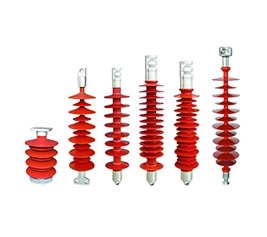en
+
In daily operation, the pollution condition of the porcelain bushing surface of the arrester should be checked, because when the porcelain bushing surface is seriously polluted, the voltage distribution will be very uneven. In a lightning arrester with shunt resistors, when the voltage distribution of one of the components increases, the current through the shunt resistors will increase significantly, which may burn out the shunt resistors and cause a fault. In addition, the arc extinguishing performance of the valve arrester may be affected. Therefore, when the porcelain jacket surface of a lightning arrester is seriously polluted, it must be cleaned in time.
Check the arrester lead and ground lead down, there are burn marks and broken strands phenomenon and discharge recorder burn through this aspect of the inspection, the easiest to find the invisible defect of arrester; Check whether the sealing of the lead wire at the top of the arrester is good. Poor sealing of the arrester will cause water dampness and accidents. Therefore, check whether the cement joint at the connection between the porcelain sleeve and the flange is tight. Check whether the electrical distance between the lightning arrester and the electrical equipment to be protected meets the requirements. The lightning arrester should be as close as possible to the electrical equipment to be protected. Check the operation of the recorder after the lightning storm. Check the leakage current, if power frequency discharge voltage is greater than or less than the standard value, should be repaired and tested; Discharge recorder should be repaired when the number of actions is too much; Porcelain bushing and cement joint cracks; Flanges and rubber pads should be repaired when they fall off.
The insulation resistance of the arrester should be checked regularly. When measuring, an insulated dial meter of 2500 volts is used. When the measured value is compared with that of the previous time, it can continue to be put into operation if there is no significant change. When the insulation resistance decreases significantly, it is generally caused by poor sealing and damp or short circuits in the spark gap. When it is lower than the qualified value, the characteristic test should be made; When insulation resistance increases significantly, it is generally due to poor contact or fracture of internal parallel resistance, spring relaxation and internal component separation.
In order to discover the hidden defects in the valve arrester in time, a preventive test should be carried out before the annual thunderstorm season.




